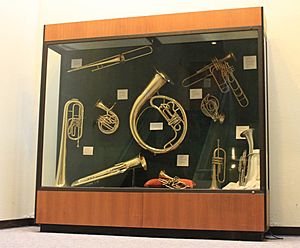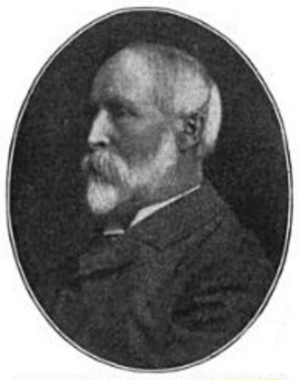Stearns Collection of Musical Instruments facts for kids

Stearns Collection display in the
UMich School of Music, Dance & Theatre's Earl V. Moore Building. |
|
| Established | 1898 by Frederick Stearns |
|---|---|
| Director | Joseph Gascho |
| Staff | Katie Sucha, program manager Carol Stepanchuk, outreach and lecture series director |
| Location | Ann Arbor, Michigan, United States 42°17′25.1″N 83°43′15.6″W / 42.290306°N 83.721000°W |
The Stearns Collection of Musical Instruments is a huge group of musical instruments. It is kept at the University of Michigan in Ann Arbor, Michigan. There are almost 3,000 instruments from all over the world! These instruments are both old and new.
A man named Frederick Stearns started the collection. He was a businessman who made medicines. He gave his instruments to the university in 1898. People from all over the world study these instruments.
Contents
Amazing Instruments You Can See
The Stearns Collection has many special instruments. It includes the trumpets of Armando Ghitalla. He was a main trumpet player for the Boston Symphony Orchestra. He also taught at the University of Michigan.
You can also see a collection of violin bows from Jerry Tetewsky. One very cool item is Robert Moog's first Moog synthesizer. This electronic instrument was made in 1964. The collection also has an RCA theremin. This unique instrument was used on the "Green Hornet" radio show from 1936 to 1952.
Learning About the Collection
The collection has been carefully documented over the years. A book listing all the instruments was first published in 1918. A second version came out in 1921.
Later, in 1988, Professor James M. Borders wrote another book. This book focused on the wind and percussion instruments. These instruments came from Europe and America.
The Story of Some Instruments
The museum's collection includes some interesting items. Some of these were bought from an Italian instrument seller named Leopoldo Franciolini. He was known for selling instruments that were not always what they seemed.
The museum is very honest about these items. Its website and signs clearly explain which instruments might have been changed or are not original. This helps everyone learn the true history of each piece.
Where to See the Instruments
The main collection is kept at the North Campus Research Complex. However, you can see parts of the collection in different places. There are exhibits in the lower lobby of the university's Hill Auditorium. This building is on the Central Campus.
You can also find displays at the Earl V. Moore Building. This building is located on the North Campus.
See also
- List of music museums


